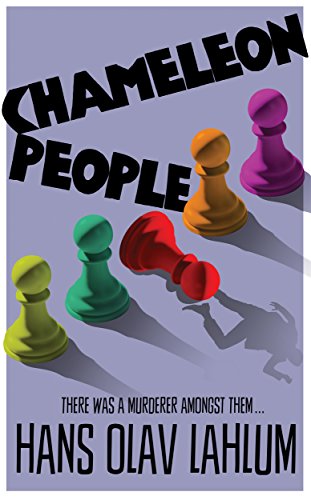
An Oslo police detective known as K2 is startled one Saturday evening when a boy of about 15 frantically rushes through his apartment door and surrenders himself just moments ahead of the police officers who are chasing him. It soon becomes clear that a prominent right-wing politician has been murdered, and the boy is carrying a bloody knife. But he refuses to say anything other than that he is innocent. He won’t even disclose his name, insisting that K2 will understand soon enough.
Thus opens bestselling Norwegian crime novelist Hans Olav Lahlum‘s Chameleon People. As the story unfolds and the boy’s guilt seems increasingly unlikely to K2, a growing cast of characters emerge as suspects in the murder. And the politician’s murder becomes just the first of many intertwined mysteries that K2 confronts.
Detective Inspector Kolbjørn Kristiansen (“K2” to the news media) has gained a measure of fame in Oslo for having solved a number of difficult cases. In fact, he attributes much of his success to the extraordinary mind of his secret adviser, a young heiress named Patricia Borchmann who uses a wheelchair. K2 is convinced he would be fired if his boss were ever to learn that he has divulged confidential police matters to Patricia. K2’s fiancée, Miriam, contemptuously refers to Patricia as “the Genius of Frogner,” the wealthy neighborhood where her mansion is located, but never calls her by name. The two are intensely jealous of each other. Notably, K2 is 37 as Chameleon People opens, Patricia has just turned 22, and Miriam is only 25. Clearly, K2 likes them young.
Chameleon People (K2 and Patricia #4) by Hans Olav Lahlum ★★★☆☆
Lahlum’s fourth novel in the “K2 and Patricia” series of detective novels opens on Saturday, March 18, 1972, and wraps up eight days later. The book is structured in a strictly chronological manner, day by day, and is written in the first person from K2’s perspective. Lahlum skillfully weaves together three seemingly unconnected strands of this murder mystery, lifting it from the confines of the traditional whodunit and building suspense that is lacking when an author’s clear intent is simply to misdirect the reader by layering on unlikely suspects. (As you can see, I am not a fan of whodunits.) Lahlum’s plotting is better than that.
However, the writing style in Chameleon People is the flattest I’ve ever come across from anyone who has managed to publish more than one novel. Perhaps this is the work of a translator who is better suited to instruction manuals. Or maybe Lahlum’s prose is just that unexciting. For his sake, I hope the explanation lies with the translator.
For related reading
You might also enjoy my posts:
- Top 10 mystery and thriller series
- 20 excellent standalone mysteries and thrillers
- 30 outstanding detective series from around the world
- Top 20 suspenseful detective novels
- Top 10 historical mysteries and thrillers
And you can always find my most popular reviews, and the most recent ones, on the Home Page.



























